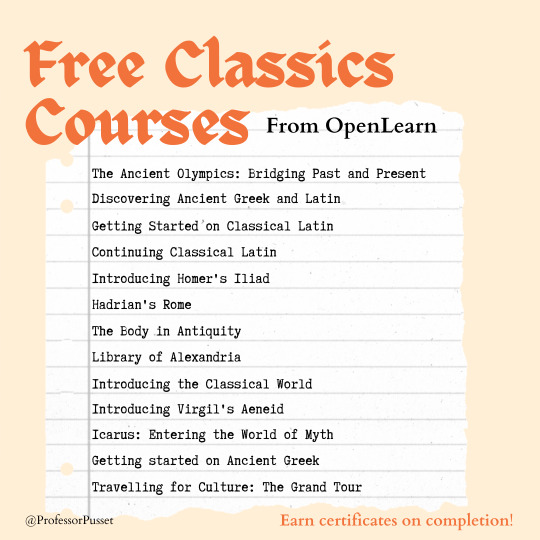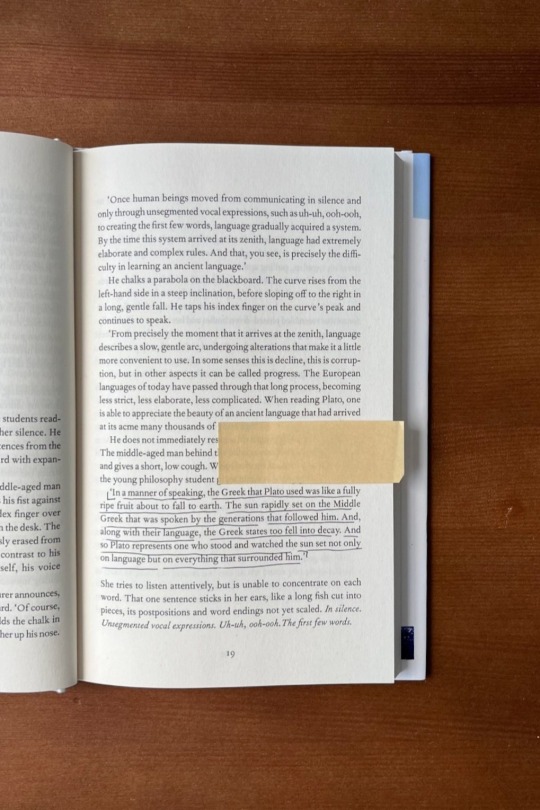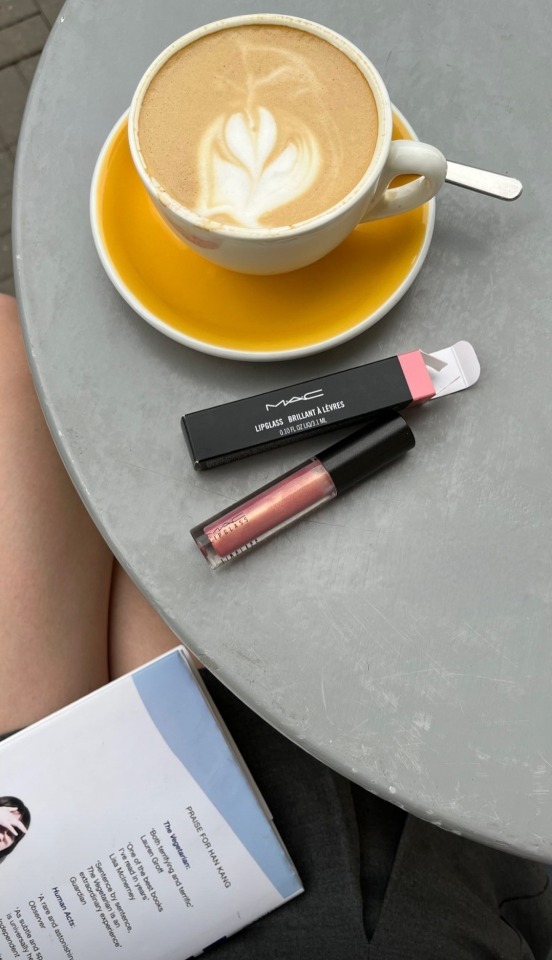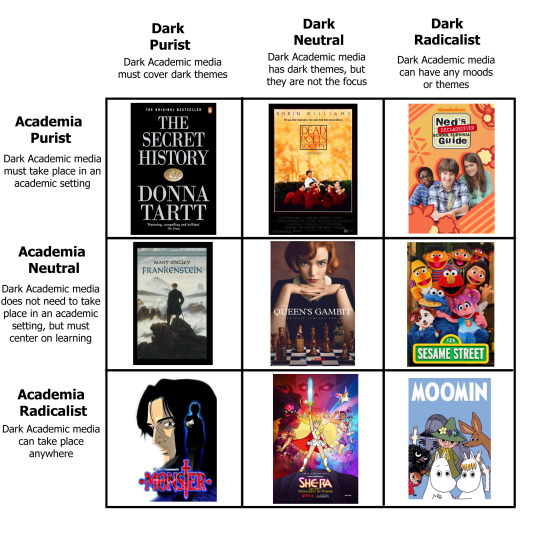#dark academia guide
Explore tagged Tumblr posts
Text
12am. Rain poring down my window. Everyone asleep. No noise whatsoever. A brain full of inspiration.
I've wished for a night like this for ever, and I'm not gonna waste it.
#academia aesthetic#dark academia#classic academia#dark academia aesthetic#academia#chaotic academic aesthetic#romantic academia#chaotic academia#poems#poetic#dark acadamia aesthetic#chaotic acadmeia quotes#dark academia guide#stem academia#light academia
413 notes
·
View notes
Text
𝓭𝓪𝓻𝓴 𝓪𝓬𝓪𝓭𝓮𝓶𝓲𝓪 ˙⟡🪶─
.୨୧‧₊ 𝓯𝓪𝓼𝓱𝓲𝓸𝓷 𝓹𝓽.1 .୨୧‧₊
Dark academia fashion is all about blending timeless, academic-inspired pieces with moody, vintage aesthetics. Here's a guide to the essentials for building your own dark academia inspired wardrobe:
First, let's talk about the colour palette. The dark academia aesthetic is known for its muted, earthy colours, so try to stick with that.
neutrals: black, white, grey, and beige
earth tones: brown, navy, forest green, maroon, and rust
accents: mustard yellow, dark gold, and deep burgundy

The second thing we must discuss before jumping onto the essentials are fabrics and patterns.
fabrics: tweed, wool, corduroy, velvet, and cotton - rich textures create depth and warmth
patterns: houndstooth, plaid, pinstripes, and argyle - if you have anything with some kind of gothic pattern, wear it

That is all that is needed for the foundation of the dark academic fashion. In the next post I'm going to show you some wardrobe essentials that are a must-have if you're trying to dress in the dark academic style.
Have a lovely day,
-michala♡
(ps. Sorry for the late post, it's the Christmas season and things are crazy at work but I'll try to be as consistent with posts as I promised)
#dark academia vibes#dark academia aesthetic#dark academia fashion#dark academia guide#dark academia#dark academic aesthetic#patterns and fabrics#dark academia colour palette#books and literature#dark academia outfit#dark academia moodboard
78 notes
·
View notes
Text
Dark Academia Music Guide
Classical:
• Lacrimosa by Mozart
• Swan Lake, Op. 20, Act 2: No. 10, Scene. Moderato by Tchaikovsky
• Nocturne No. 1 in B flat minor, Op. 9 No. 1
check out this playlist
Folk:
• Northern Attitude by Noah Kahan, Hozier
• Ho Hey by The Lumineers
• Achilles Come Down by Gang of Youths
check out this playlist
Rock:
• Wicked Game by Chris Isaak
• Eleanor Rigby by The Beatles
• Girl With One Eye by Florence + The Machine
check out this playlist
Jazz
• Feel Good Inc. by Scott Bradlee
• Wildflower and Barley by Hozier, Allison Russell
• The World We Knew (Over and Over) by Frank Sinatra
check out this playlist
I also have this playlist that have a bit of everything I mentioned.
#dark academia#dark academia music#playlist#light academia#dark academia aesthetic#hozier#florence and the machine#the lumineers#noah kahan#dark academia guide
42 notes
·
View notes
Text
✨What I do on my morning routine✨
Brush my teeth, when I'm affirming mentally.
Have a shower.
Dress up.
Moisture my body.
Skincare.
Hair care. (Brush it and I do a hairstyle)
Drink water. At least 100mls.
Do some breakfast. Coffee to my mother and something to me.
I fill my water bottle.
Read the virtual journal called "the news".
Get to school.

When I'm at my school (at 6:45 AM), I take a book and read it. It's common to me, hug everyone that arrives and It's my friend. (Before the professor arrive)
(English isn't my fist language, and I'm trying to do not use translators, please, feel free to correct me)
#it girl#positive affirmations#live in the end#beauty affirmations#girlblogging#girl blogger#dark academia guide#self concept affirmations#glow up#morning routine
32 notes
·
View notes
Text
🐚⚓️🫧List of Random Things For Your Dark Coastal Settings | For Writers🐚⚓️🫧
Since you all loved the list of random things for Dark Academia, here’s a list of items, things, sights etc.. you might find in a Dark Coastal setting.
The Cliffside 🌊
Jagged slate-gray rocks jutting out from the churning sea
Swaths of wild, windblown grasses and mosses clinging to the cliffs
Crumbling stone ruins half-hidden in the fog
The eerie cries of seabirds circling overhead
Gnarled, salt-weathered driftwood scattered across the shoreline
The Cove 🐚
A small pebbly beach tucked into a sheltered inlet
Seaweed-covered tide pools teeming with mysterious marine life
Centuries-old fishing nets and lobster traps hung to dry
Weathered wooden rowboats moored at a rickety dock
The salty, briny scent of the sea lingering in the air
The Lighthouse 🗼
A tall, round stone tower with a flickering lantern on top
Faded nautical charts and weather-beaten log books inside
An antique brass telescope trained on the horizon
The heavy thump of the lighthouse bell in the distance
Coils of fraying rope and a tarnished brass spyglass on the windowsill
The Shipwreck 🛥️
The rusted, half-submerged hull of an ancient sailing vessel
Tangled knots of kelp and barnacles clinging to the metal
Fragments of shattered wood and twisted metal debris
The eerie, echoing creaks and groans of the wreckage in the waves
Fragments of weathered, sun-bleached bones glinting in the murky depths
The Coastal Cottage 🏠
A small, weathered wooden house with peeling paint
Tattered sheer curtains fluttering in the salty sea breeze
Shelves lined with antique glass bottles and driftwood sculptures
A wood-burning stove with a teapot whistling softly
The distant sound of foghorns cutting through the mist
The Shipwreck Cove 🚢
Jutting black cliffs, their bases strewn with the bones of broken ships
Seaweed-covered ribs of an old shipwreck, barnacles clinging to the wood
Rusted metal and shattered glass glittering in the crashing waves
Cawing of crows circling overhead, their shadows flickering on the rocks
The hollow, echoing sound of the wind whistling through the caves
The Seaside Cemetery 🪦
Rows of crumbling tombstones covered in moss and lichen
Twisted, windblown trees casting long, ominous shadows
The faint scent of night-blooming jasmine on the breeze
A rusted wrought-iron gate creaking open to the path
Fog rolling in, obscuring the distant sound of the surf
#writing#thewriteadviceforwriters#writeblr#writers block#on writing#writing tips#how to write#creative writing#writers on tumblr#writers and poets#dark academia#dark academism#dark acamedia#dark acadamia aesthetic#dark acadamia quotes#fiction writing#writing a book#romance writing#writing advice#writing blog#novel writing#writing community#writing guide#writing characters#writing ideas#writing inspiration#writing resources#writing software#writing reference#writing tips and tricks
2K notes
·
View notes
Text


Free Classics Courses - With Certificates!
Studying "the classics" is a rich, rewarding and thoroughly enjoyable experience. Unfortunately these days, many of us lack the opportunity or resources to integrate ancient civilisations and languages into our formal education.
I, for one, am forever grateful that the advent of the digital age heralded new and interesting ways for society to share a wealth of information. Since the early noughties, I've tracked down free online courses in areas of personal interest. Naturally, the Classics is a subject I gravitated towards, and it saddened me to notice that over time free courses in the arts and humanities dwindled in favour of modern, digital, knowledge.
However, I am gladdened to share that OpenLearn (a branch of The Open University) have a growing selection of free Classics courses! All of these courses offer a free certificate to download and print on completion, and are drawn from the various undergraduate courses provided by the university proper.
These courses vary in length and difficulty, but provide an excellent starting point for anyone interested in the Classics, or who would like to sample university level content before committing to a more formal course of study.
Here is a full list of courses in the Classics category at OpenLearn, though I strongly suspect more will be added over time:
The Ancient Olympics: bridging past and present
Highlights the similarities and differences between our modern Games and the Ancient Olympics and explores why today, as we prepare for future Olympics, we still look back at the Classical world for meaning and inspiration.
Discovering Ancient Greek and Latin
Gives a taste of what it is like to learn two ancient languages. It is for those who have encountered the classical world through translations of Greek and Latin texts and wish to know more about the languages in which these works were composed.
Getting started on classical Latin
Developed in response to requests from learners who had had no contact with Latin before and who felt they would like to spend a little time preparing for the kind of learning that studying a classical language involves. The course will give you a taster of what is involved in the very early stages of learning Latin and will offer you the opportunity to put in some early practice.
Continuing classical Latin
Gives the opportunity to hear a discussion of the development of the Latin language.
Introducing Homer's Iliad
Focuses on the epic poem telling the story of the Trojan War. It begins with the wider cycle of myths of which the Iliad was a part. It then looks at the story of the poem itself and its major theme of Achilles' anger, in particular in the first seven lines. It examines some of the characteristic features of the text: metre, word order and epithets. Finally, it explores Homer's use of simile. The course should prepare you for reading the Iliad on your own with greater ease and interest.
Hadrian's Rome
Explores the city of Rome during the reign of the emperor Hadrian (117-38 CE). What impact did the emperor have on the appearance of the city? What types of structures were built and why? And how did the choices that Hadrian made relate to those of his predecessors, and also of his successors?
The Body in Antiquity
Will introduce you to the concept of the body in Greek and Roman civilisation. In recent years, the body has become a steadily growing field in historical scholarship, and Classical Studies is no exception. It is an aspect of the ancient world that can be explored through a whole host of different types of evidence: art, literature and archaeological artefacts to name but a few. The way that people fulfil their basic bodily needs and engage in their daily activities is embedded in the social world around them. The body is a subject that can reveal fascinating aspects of both Greek and Roman culture it will help you to better understand the diversity of ancient civilisation.
Library of Alexandria
One of the most important questions for any student of the ancient world to address is 'how do we know what we know about antiquity?' Whether we're thinking about urban architecture, or love poetry, or modern drama, a wide range of factors shape the picture of antiquity that we have today. This free course, Library of Alexandria, encourages you to reflect upon and critically assess those factors. Interpreting an ancient text, or a piece of material culture, or understanding an historical event, is never a straightforward process of 'discovery', but is always affected by things such as translation choices, the preservation (or loss) of an archaeological record, or the agendas of scholars.
Introducing the Classical World
How do we learn about the world of the ancient Romans and Greeks? This free course, Introducing the Classical world, will provide you with an insight into the Classical world by introducing you to the various sources of information used by scholars to draw together an image of this fascinating period of history.
Introducing Virgil's Aeneid
This free course offers an introduction to the Aeneid. Virgil’s Latin epic, written in the 1st century BCE, tells the story of the Trojan hero Aeneas and his journey to Italy, where he would become the ancestor of the Romans. Here, you will focus on the characterisation of this legendary hero, and learn why he was so important to the Romans of the Augustan era. This course uses translations of Virgil’s poem, and assumes no prior knowledge of Latin, but it will introduce you to some key Latin words and phrases in the original text.
Icarus: entering the world of myth
An introduction to one of the best-known myths from classical antiquity and its various re-tellings in later periods. You will begin by examining how the Icarus story connects with a number of other ancient myths, such as that of Theseus and the Minotaur. You will then be guided through an in-depth reading of Icarus’ story as told by the Roman poet Ovid, one of the most important and sophisticated figures in the history of ancient myth-making. After this you will study the way in which Ovid’s Icarus myth has been reworked and transformed by later poets and painters.
Getting started on ancient Greek
A taster of the ancient Greek world through the study of one of its most distinctive and enduring features: its language.
The course approaches the language methodically, starting with the alphabet and effective ways to memorise it, before building up to complete Greek words and sentences. Along the way, you will see numerous real examples of Greek as written on objects from the ancient world.
Travelling for Culture: The Grand Tour
In the eighteenth century and into the early part of the nineteenth, considerable numbers of aristocratic men (and occasionally women) travelled across Europe in pursuit of education, social advancement and entertainment, on what was known as the Grand Tour. A central objective was to gain exposure to the cultures of classical antiquity, particularly in Italy. In this free course, you’ll explore some of the different kinds of cultural encounters that fed into the Grand Tour, and will explore the role that they play in our study of Art History, English Literature, Creative Writing and Classical Studies today.
#ancient greece#classics#greek mythology#classical studies#classical education#greek#latin#the grand tour#dark academia#light academia#dark academia guide#openlearn#free courses#online education
206 notes
·
View notes
Text
But don't forget who you really are. And I'm not talking about your so-called real name. All names are made up by someone else, even the one your parents gave you. You know who you really are. When you're alone at night, looking up at the stars, or maybe lying in your bed in total darkness, you know that nameless person inside you.
― Louis Sachar, Stanley Yelnats' Survival Guide to Camp Green Lake
#Louis Sachar#Stanley Yelnats' Survival Guide to Camp Green Lake#books#inner self#soul#survival#true self#dark academia aesthetic#academia aesthetic#chaotic academia#classic academia#light academia aesthetic#dark academia#soft academia#romantic academia#study motivation#studyspo#studyinspo#studying#study aesthetic#study notes#study space#studygram#study blog#light academia#classic literature#poetry#art academia#art#libraries
2K notes
·
View notes
Text



beginners guide to classics:
novels —
the picture of dorian gray by oscar wilde (the classic that started it all for me - oscar wilde is KING)
dracula - bram stoker
rebecca - daphne du maurier
a christmas carol - charles dickens
frankenstein - mary shelley
their eyes were watching god - zora neale hurston
the haunting of hill house - shirley jackson
lolita - vladimir nabakov (my current read)
jane eyre - charlotte bronte
plays & short story collections —
the importance of being earnest - oscar wilde
the crucible - arthur miller
the bloody chamber and other short stories - angela carter (adore this)
edgar allen poe's short stories
poetry —
goblin market - christina rossetti
sappho
#beginners guide to classics#classics list#classics recs#classics#recs#book recs#literature aesthetics#books#book#bookish#bookblr#bookworm#bookstagram#dark academia#booklover#books and libraries#penguin#oxford world classics#aesthetic#photography#cafe#coffee#studyblr#study space#study hard#study tips#study#dark acadamia aesthetic#vintage
944 notes
·
View notes
Text
How to feel alive/stop being bored out of your mind, a guide for losers
jump on your bed, write something teeny tiny on the walls, break a small rule
get a dollar worth of pennies and write lucky on them and drop one or two at places you go
bury something small that you like in a place you feel safe
make a small bracelet/anklet, even if its just a piece of sting and never take it off
take a really really cold shower
go star gazing/look at the moon
write a letter to your past/future self
write bad poetry/nice messages and tuck it into books at the library
sit and listen to a song that was your favorite four or five years ago, don't do anything else but sit and listen to it
make a trash journal. Get a cheap notebook and write down EVERYTHING in there, carry it around with you. It will help you figure out who you are/remind you that you are a person.
when was the last time you felt alive? Like really alive? If you remember, write it down in as much detail as you can. If you don't know, write down a time you were happy or very angry. Honestly, any strong emotion will work.
create a bad drawing, like kindergartener level. If you want, fold it up and stick it onto your fridge.
block that person
tell someone how much you appreciate them
put old things you don't need anymore in a box, write take care of it on top, and leave it somewhere
write positive graffiti in public restroom stalls
bake bread
#mental health#mental health support#positivity#if anybody has ideas of their own definitely include them!#a losers guide#freedom#random#self improvement#life quote#loveyourself#quotes#self love#motivation#motivating myself#health & fitness#life purpose#love yourz#feel alive#believe#energy boost#vitality#wellness journey#revitalize#dark academia#light academia#light academia aesthetic#dark academia aesthetic#chaotic academia#chaotic academic aesthetic#summer
189 notes
·
View notes
Text

ahem.
#dark academia#my post#the secret history#dead poets society#frankenstein#the queen's gambit#monster anime#she ra#moomin#sesame street#ned's declassified school survival guide
469 notes
·
View notes
Text
drinking tea while playing online chess is peak chaotic academia
#classic academia#academia#poetic#chaotic academic aesthetic#dark academia aesthetic#dark academia#academia aesthetic#science academia#chaotic academia#dark academia guide#stem academia#light academia#dark acadamia aesthetic#academics#dark aesthetic#dark acamedia#chaotic acadmeia quotes
647 notes
·
View notes
Text
𝓭𝓪𝓻𝓴 𝓪𝓬𝓪𝓭𝓮𝓶𝓲𝓪 ˙⟡🪶─
.୨୧‧₊ 𝓯𝓪𝓼𝓱𝓲𝓸𝓷 𝓹𝓽.2 .୨୧‧₊
Since we have already discussed the importance of colours, fabrics and patterns when it comes to dressing in the dark academic aesthetic, we can now dive into the wardrobe essentials and how to style them.

First on the list we have tops:
button-up shirts - if you want that vintage feel, look for details like Peter Pan collars, ruffles, or high necklines
turtlenecks - ribbed or knit textures add warmth and visual interest
sweaters & cardigans - oversized knit sweaters, fitted wool pullovers, cable-knit cardigans, and sweater vests to layer over shirts



Next, we have to obviously talk about bottoms:
trousers - high-waisted trousers in tailored cuts, cropped or pleated pants
skirts - pleated skirts in midi or knee-length styles, a-line skirts for a touch of sophistication
maxi skirts - flowy, dark skirts for a more romantic take on the aesthetic



Now that we have tops and bottoms done, we'll have a look at proper footwear to make your outfit complete:
oxfords & brogues - they are the classic shoes everyone thinks of when talking about the dark academia aesthetic
loafers - sleek, vintage-style loafers with or without tassels are a must have
boots - ankle or knee-high boots for colder months
mary janes - to add a feminine touch to balance out structured outfits






We could be done here since these are the main essentials you need in your wardrobe, but we're not even close to being done. What if it's cold outside? You'll definitely need some type of outerwear. Let's have a look on some:
blazers - they evoke a scholarly vibe
coats - long trench coats, wool overcoats or peacoats to keep you warm
capes or cloaks - for a more dramatic, old-world touch, consider a dark, tailored cape



Okay, stunning! Now let's hop onto dresses:
shirt dresses - structured, button-down dresses
pinafore dresses - layered over turtlenecks or blouses



Perfect! And the last thing on this list is accessories:
scarves - wool or cashmere scarves, long, flowing scarves for a dramatic, intellectual flair
hats - berets for a parisian academic touch, newsboy caps or fedoras
eyewear - round or tortoiseshell glasses for a scholarly look
jewelry - minimalist gold or silver rings, pendants, and vintage-inspired pieces like pocket watches or signet rings
belts - leather belts to cinch coats, dresses, or trousers






Finishing touches:
books as accessories - a book or a journal completes the scholarly aesthetic, and you can read/write anytime you want
vintage pieces - you don't have to buy brand new items, incorporate thrifted or secondhand items both for authenticity and for your wallet to not hate you
layering - mix and match textures, patterns, and layers for academic, put-together look
have fun - don't forget to have fun while creating your looks, there are no rules in fashion so do and wear whatever you like and suits you! Confidence is the key to a fabulous outfit.
Love you all, and thank you so much for your support!!
-michala♡
#dark academia#dark academia fashion#dark academia aesthetic#dark academia guide#dark academic fashion#what to wear#dark academia inspo#books and libraries#books and literature#i would die for a pair of mary janes#keep it academic#dark academia moodboard
35 notes
·
View notes
Text
Guide to Dark Academia: Research
The history of the authors of classics (Oscar Wild, Homer, Etc.)
History (the French Revolution, World War I, Historical Figures)
College Secret Societies
Types of Coffee
History of Coffee
Literature
Music Theory
How music impacts the brain
History of Great Artists
The history of Commonplacing (one of my favorites)
How to solve a mystery
Film related topics
Mythology (Greek, Norse, Egyptian, etc.)
Poetry and its historical significance
Secret codes
Language of flowers (bonus if you make a bouquet for yourself or a friend)
Vintage Cars
You can suggest content or ask something by clicking the ask me questions button!
#dark academic aesthetic#dark acadamia aesthetic#dark academia#green academia#academic#light academia#chaotic academia#academia#guide#research#research topics#school essay
126 notes
·
View notes
Text

How to Impress a Pyromaniac
She’s cute and she carries a box of matches everywhere she goes🔥 She had particular tastes, so prepare to cater to them or get burned trying
#alternative lives#helpful guide#list#niche guides#edgy moodboard#guide#aesthetic#going mad#edgy#girl rotting#pyromaniac#pyromancer#flames#fires#fire#candle#matches#lighter#punk#crush#crazy#insane girl#dangerous#passion#romance#dark academia#femme fatale#obsessive love#obsession#manic
108 notes
·
View notes
Text
List of Random Things For Your Dark Academia Settings | For Writers
The Library 📚
Towering mahogany bookshelves filled with ancient leather-bound tomes
Antique globes and faded maps mounted on the walls
Heavy velvet drapes blocking out the sunlight
Ornate brass reading lamps casting a warm glow
The musty smell of old books permeating the air
The Study 🪶
A large oak desk strewn with papers, quills, and ink bottles
Walls lined with pinned insect specimens and anatomical drawings
An antique typewriter, its keys clacking softly
Stacks of well-worn leather journals and notebooks
A cabinet of curiosities filled with skulls, fossils, and scientific oddities
The Classroom 🎓
Rows of old wooden desks, surfaces scratched with generations of graffiti
A blackboard covered in elaborate chalk diagrams and Latin phrases
Dusty shelves holding jars of formaldehyde-preserved specimens
Antique microscopes and brass telescopes waiting to be used
The tick-tock of a grandfather clock counting down the minutes
The Dormitory 🕯️
A four-poster bed heaped with tattered quilts and faded velvet pillows
Parquet wood floors layered with antique persian rugs
Flickering candles in tarnished silver holders casting dancing shadows
A steamer trunk overflowing with vintage tweeds and wool knits
Tea-stained pages of love letters and poetry scattered on the nightstand
The Secret Society Meeting Room 🗝️
An imposing stone fireplace with Latin phrases carved into the mantel
Worn leather armchairs circled around a low table set with tarnished silver
The air thick with pipe smoke and burning incense
Shelves lined with ancient masks, ceremonial daggers, and dusty alchemical tomes
Shadows dancing on the tapestry-covered walls in the candlelight
#writing#thewriteadviceforwriters#writeblr#writers block#on writing#writing tips#how to write#creative writing#writers on tumblr#writers and poets#dark academia#dark academism#dark acamedia#dark acadamia aesthetic#dark acadamia quotes#fiction writing#writing a book#romance writing#writing advice#writing blog#novel writing#writing community#writing guide#writing characters#writing ideas#writing inspiration#writing resources#writing software#writing reference#writing tips and tricks
2K notes
·
View notes
